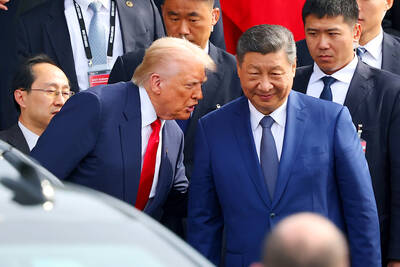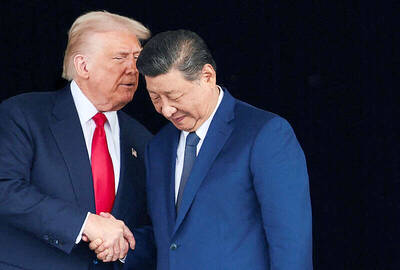Unknown hackers have broken into the security networks of Lockheed Martin Corp and several other US military contractors, a source with direct knowledge of the attacks said.
They breached security systems designed to keep out intruders by creating duplicates to “SecurID” electronic keys from EMC Corp’s RSA security division, said the person who was not authorized to publicly discuss the matter.
It was not immediately clear what kind of data, if any, was stolen by the hackers. However, the networks of Lockheed and other military contractors contain sensitive data on future weapons systems, as well as military technology currently used in Iraq and Afghanistan.
Weapons makers are the latest companies to be breached through sophisticated attacks that have pierced the defenses of huge corporations including Sony Corp, Google Inc and EMC Corp. Security experts say that it is virtually impossible for any company or government agency to build a security network that hackers will be unable to penetrate.
The Pentagon, which has about 85,000 military personnel and civilians working on cybersecurity issues worldwide, said it also uses a limited number of RSA electronic security keys, but declined to say how many for security reasons.
The hackers learned how to copy the security keys with data stolen from RSA during a sophisticated attack that EMC disclosed in March, according to the source.
EMC declined to comment on the matter, as did executives at major defense contractors.
Rick Moy, president of NSS Labs, an information security company, said the original attack on RSA was likely targeted at its customers, including military, financial, US governmental and other organizations with critical intellectual property.
He said the initial RSA attack was followed by malware and phishing campaigns seeking specific data that would link tokens to endusers, which meant the current attacks may have been carried out by the same hackers.
“Given the military targets and that millions of compromised keys are in circulation, this is not over,” he said.
Defense contractors’ networks contain sensitive data on sophisticated weapons systems, but all classified information is kept on separate, closed networks managed by the US government, said a former senior defense official, who was not authorized to speak on the record.
SecurIDs are widely used electronic keys to computer systems that work using a two-pronged approach to confirming the identity of the person trying to access a computer system. They are designed to thwart hackers who might use key-logging viruses to capture passwords by constantly generating new passwords to enter the system.
The SecurID generates new strings of digits on a minute-by-minute basis that the user must enter along with a secret personal identification number before they can access the network. If the user fails to enter the string before it expires, then access is denied.

CALL FOR SUPPORT: President William Lai called on lawmakers across party lines to ensure the livelihood of Taiwanese and that national security is protected President William Lai (賴清德) yesterday called for bipartisan support for Taiwan’s investment in self-defense capabilities at the christening and launch of two coast guard vessels at CSBC Corp, Taiwan’s (台灣國際造船) shipyard in Kaohsiung. The Taipei (台北) is the fourth and final ship of the Chiayi-class offshore patrol vessels, and the Siraya (西拉雅) is the Coast Guard Administration’s (CGA) first-ever ocean patrol vessel, the government said. The Taipei is the fourth and final ship of the Chiayi-class offshore patrol vessels with a displacement of about 4,000 tonnes, Lai said. This ship class was ordered as a result of former president Tsai Ing-wen’s (蔡英文) 2018

UKRAINE, NVIDIA: The US leader said the subject of Russia’s war had come up ‘very strongly,’ while Jenson Huang was hoping that the conversation was good Chinese President Xi Jinping (習近平) and US President Donald Trump had differing takes following their meeting in Busan, South Korea, yesterday. Xi said that the two sides should complete follow-up work as soon as possible to deliver tangible results that would provide “peace of mind” to China, the US and the rest of the world, while Trump hailed the “great success” of the talks. The two discussed trade, including a deal to reduce tariffs slapped on China for its role in the fentanyl trade, as well as cooperation in ending the war in Ukraine, among other issues, but they did not mention

HOTEL HIRING: An official said that hoteliers could begin hiring migrant workers next year, but must adhere to a rule requiring a NT$2,000 salary hike for Taiwanese The government is to allow the hospitality industry to recruit mid-level migrant workers for housekeeping and three other lines of work after the Executive Yuan yesterday approved a proposal by the Ministry of Labor. A shortage of workers at hotels and accommodation facilities was discussed at a meeting of the legislature’s Transportation Committee. A 2023 survey conducted by the Tourism Administration found that Taiwan’s lodging industry was short of about 6,600 housekeeping and cleaning workers, the agency said in a report to the committee. The shortage of workers in the industry is being studied, the report said. Hotel and Lodging Division Deputy Director Cheng

‘SECRETS’: While saying China would not attack during his presidency, Donald Trump declined to say how Washington would respond if Beijing were to take military action US President Donald Trump said that China would not take military action against Taiwan while he is president, as the Chinese leaders “know the consequences.” Trump made the statement during an interview on CBS’ 60 Minutes program that aired on Sunday, a few days after his meeting with Chinese President Xi Jinping (習近平) in South Korea. “He [Xi] has openly said, and his people have openly said at meetings, ‘we would never do anything while President Trump is president,’ because they know the consequences,” Trump said in the interview. However, he repeatedly declined to say exactly how Washington would respond in